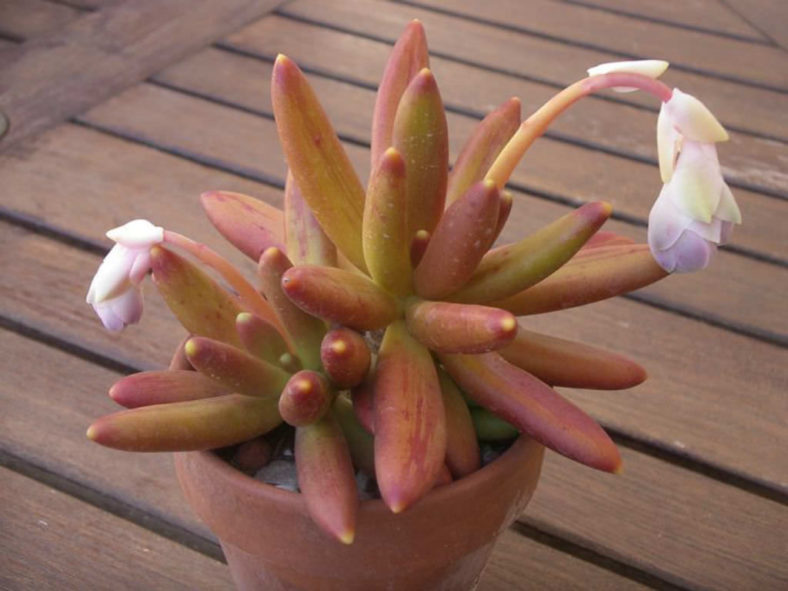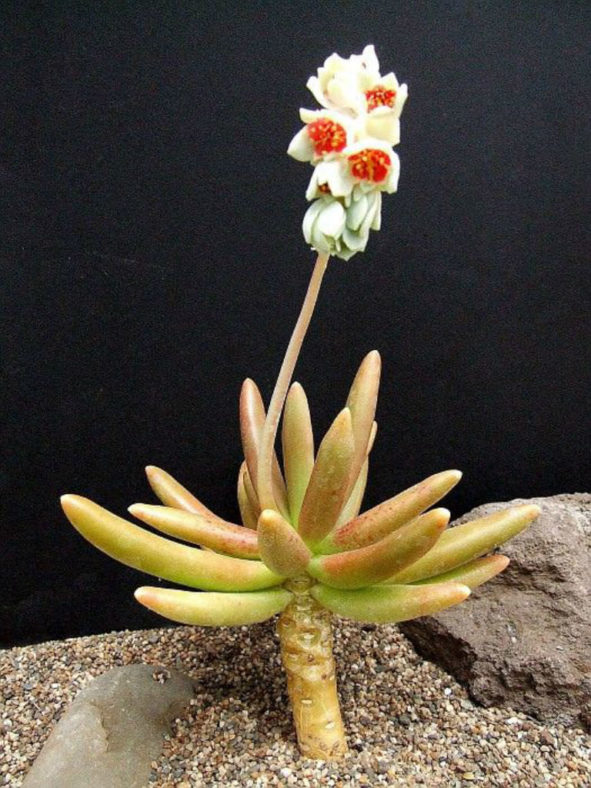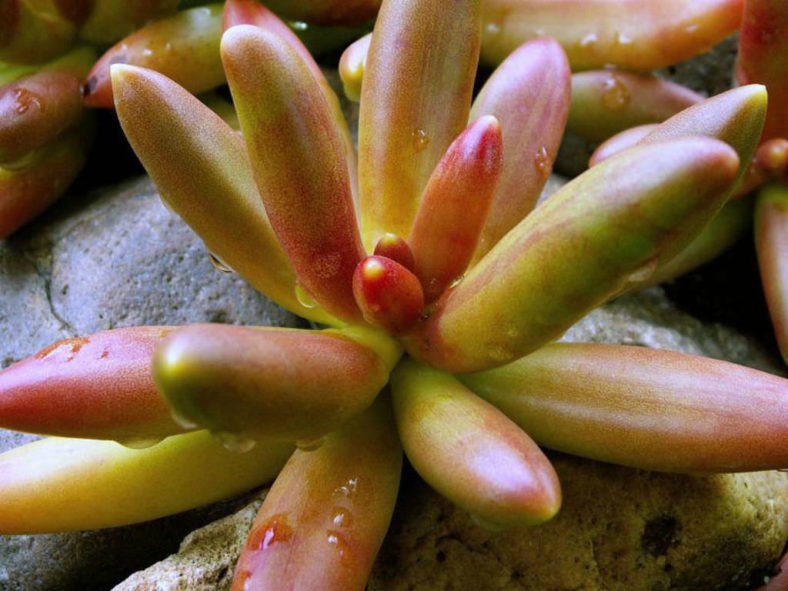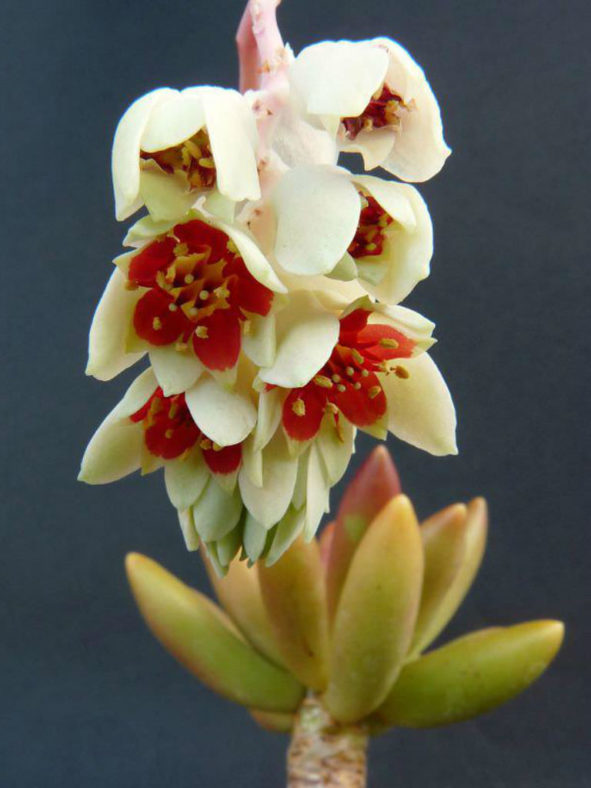Scientific Name
Pachyphytum viride Walther
Scientific Classification
Family: Crassulaceae
Subfamily: Sedoideae
Tribe: Sedeae
Subtribe: Sedinae
Genus: Pachyphytum
Origin
This species is native to Mexico. It grows in Querétaro on steep rocky areas on north-facing cliffs at elevations that range from 5,910 to 7,220 feet (1,800 to 2,200).
Description
Pachyphytum viride is a succulent plant with decumbent or pendent stems and leaves arranged in loose rosettes in the uppermost part of the stems. It is the largest species of the genus. Stems are basally few-branched and can grow up to 3.3 feet (1 m) long and 1.4 inches (3.5 cm) in diameter. The leaves are thick, fleshy, and narrow and can measure up to 4 inches (10 cm) long, 1.2 inches (3 cm) wide, and 0.7 inches (1.7 cm) thick. They change color depending on the season and growing conditions, from pale to dark green or more or less violet-red.
The flowers can reach up to 1 inch (2.5 cm) in length and 0.5 inches (1.3 cm) in diameter and appear in arching clusters on reddish stalks up to 14 inches (35 cm) long from winter to early spring. The petals are white with a faint, round to ovate, dark purple-red spot towards the tip. They are hidden between the sepals.

Hardiness
USDA hardiness zone 10a to 11b: from 30 °F (−1.1 °C) to 50 °F (+10 °C).
How to Grow and Care
Pachyphytum will not tolerate frosts well. Temperatures below 20 °F (-6 °C) will kill the plant, and temperatures that may go below 45 °F (7 °C) during the extended period should be avoided. It tolerates high heat and intense sunlight. As with most succulents from the Crassulaceae family, Pachyphytum can tolerate (and even appreciate) poor soil conditions so long as it is well-draining. It can thrive in full or partial sunlight.
Allow the soil to dry before watering, and avoid getting water on the leaves. The plants will require more water in winter as winter begins its active growth season. If you are unsure when to water your plant, watch the lowermost leaves for signs of drying and water them then. Pachyphytum is far more likely to survive under-watering than over-watering. The thick, fleshy leaves will appear wilted and slightly "under-full" when they need water.
One of the most common pests to houseplants is the mealybug, and your Pachyphytum may fall prey to this pest. The symptoms of a mealybug infestation are slowed or stopped growth (though in summer, this is a typical sign of dormancy).
See more at How to Grow and Care for Pachyphytum.
Hybrids
Links
- Back to genus Pachyphytum
- Succupedia: Browse succulents by Scientific Name, Common Name, Genus, Family, USDA Hardiness Zone, Origin, or cacti by Genus
Photo Gallery
Click on a photo to see a larger version.


